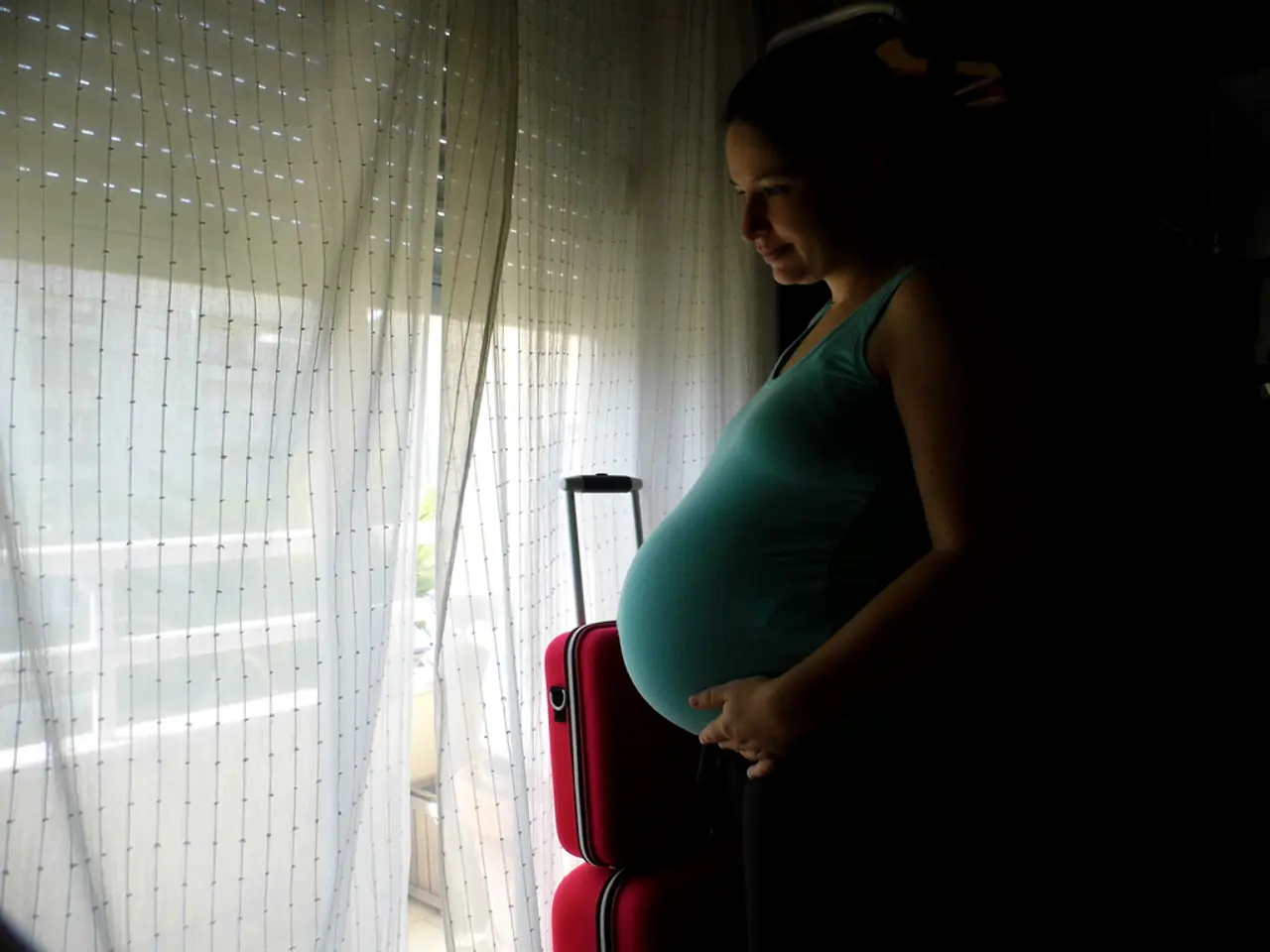Onset Speed of Preeclampsia: A Look at Its Timeline
Postpartum preeclampsia, a potentially dangerous condition, can develop within the first 48 hours of delivery or even up to six weeks after, affecting women who may have never had high blood pressure during pregnancy [1][3][4]. This condition shares similarities with preeclampsia during pregnancy, but it can present unique challenges due to the postpartum period.
Early signs of preeclampsia include high blood pressure (a primary indicator), protein in the urine, severe persistent headaches, excessive swelling in hands, face, or legs, vision changes such as blurred vision or sensitivity to light, upper abdominal pain, especially in the right upper quadrant or shoulder, sudden nausea or vomiting, mostly in the later stages of pregnancy or postpartum [2][4].
Certain risk factors increase the likelihood of developing preeclampsia. First-time pregnancies, a history of preeclampsia in previous pregnancies, maternal age extremes (very young or older mothers), pre-existing conditions such as hypertension, diabetes, kidney disease, or autoimmune disorders, multiple pregnancies, and certain atypical cases can present without high blood pressure but still have significant proteinuria and organ dysfunction [2] are all factors that should be considered.
Close monitoring of symptoms is critical through at least six weeks postpartum as preeclampsia can develop suddenly after delivery and lead to serious complications if unnoticed [1][3][4]. Preeclampsia typically occurs after the second half of a full-term pregnancy (after gestation) [5]. People at a higher risk of developing preeclampsia include those who had preeclampsia during a past pregnancy, are carrying more than one fetus, or have certain health conditions or illnesses such as diabetes, chronic hypertension, kidney disease, or autoimmune conditions [5].
When preeclampsia worsens, additional symptoms may include fluid in the lungs, atypical liver or kidney function, and a low number of blood platelets [2]. It's important to note that preeclampsia can occur during pregnancy, delivery, or up to 6 weeks after giving birth [5]. Some cases may develop gradually, while others can flare up in just a few hours [5].
High blood pressure alone does not define preeclampsia; accompanying symptoms are needed for a diagnosis [2]. Some people with preeclampsia may experience no signs or may mistake them for typical pregnancy symptoms [2]. Therefore, it's crucial for new mothers to be aware of the early signs and seek medical attention if they suspect something is wrong.
References:
[1] American Pregnancy Association. (n.d.). Postpartum Preeclampsia. Retrieved from https://americanpregnancy.org/pregnancy-complications/postpartum-preeclampsia/
[2] Mayo Clinic Staff. (2021). Preeclampsia. Retrieved from https://www.mayoclinic.org/diseases-conditions/preeclampsia/symptoms-causes/syc-20367689
[3] National Health Service (NHS). (2021). Preeclampsia. Retrieved from https://www.nhs.uk/conditions/preeclampsia/
[4] Preeclampsia Foundation. (n.d.). Preeclampsia. Retrieved from https://www.preeclampsia.org/preeclampsia
[5] March of Dimes. (n.d.). Postpartum Preeclampsia. Retrieved from https://www.marchofdimes.org/complications/postpartum-preeclampsia.aspx
- During pregnancy or postpartum, high blood pressure, protein in the urine, severe headaches, and other symptoms can indicate preeclampsia, a medical condition that can develop unique challenges in the postpartum period.
- Close monitoring of symptoms is essential for at least six weeks postpartum since preeclampsia can arise suddenly after delivery, leading to serious health-and-wellness issues if not detected early.
- Women with hypertension, diabetes, kidney disease, or autoimmune disorders, among other health-and-wellness conditions, may be at a higher risk of developing preeclampsia.
- Preeclampsia can extend beyond pregnancy and into the postpartum period, even up to six weeks after childbirth, potentially causing chronic diseases like liver or kidney dysfunction and blocked blood platelet counts.
- Alongside hypertension, other mental-health and women's-health symptoms such as vision changes, excessive swelling, upper abdominal pain, nausea, and vomiting are crucial indicators for preeclampsia, requiring immediate medical attention to avoid complications.




